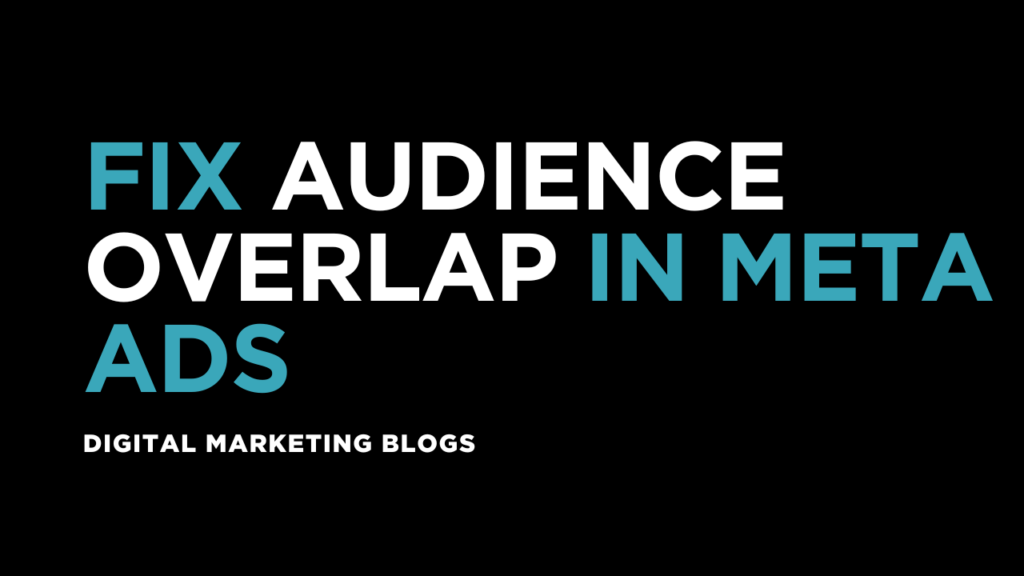Audience overlap is one of the most common yet often overlooked issues in Meta advertising. It can silently drain your budget, confuse your analytics, and hold back the performance of your campaigns. As a social media marketer in Calicut, mastering audience segmentation and preventing overlap is essential for delivering better results.
In this blog, we’ll explore what audience overlap is, why it matters, how to detect it, and practical strategies to fix it.
What is Audience Overlap?
Audience overlap occurs when multiple ad sets in your Meta Ads account target the same or similar people. This causes your campaigns to compete against each other in the ad auction, which can lead to inefficiencies.
Why is Audience Overlap a Problem?
Wasted Budget
You’re essentially bidding against yourself for the same user.
Limited Delivery
Some ad sets may not deliver at all due to auction competition.
Skewed Data
Overlap can affect the accuracy of A/B testing.
Ad Fatigue
Users see similar ads repeatedly, which reduces engagement.
Not all overlap is bad but unmanaged or excessive overlap is a problem.
How to Detect Audience Overlap
1. Use Meta’s Audience Overlap Tool
Meta offers a built-in tool inside Ads Manager. Here’s how to use it:
Go to the Audiences section in Ads Manager
Select two or more saved audiences
Click on “Actions” and choose Show Audience Overlap
You’ll see a Venn diagram and percentage of overlap
This helps you understand how much your audiences intersect.
2. Monitor Performance Signals
Even without the tool, you can suspect overlap if:
Ad sets show limited or inconsistent delivery
One ad set dominates spend while others struggle
You notice the same users interacting with multiple ads
How to Fix Audience Overlap
1. Use Audience Exclusions
This is the most effective and precise fix. You can exclude one audience from another.
Example
If you’re running a campaign to retarget website visitors, make sure to exclude that audience from your cold traffic campaign.
Set up exclusions in the ad set level under the “Audience” section.
2. Merge or Consolidate Ad Sets
If two ad sets are targeting similar demographics or interest groups, consider merging them into a single ad set. This eliminates competition and simplifies reporting.
When to Merge
Similar objectives
Nearly identical targeting
Comparable budget levels
3. Split Campaigns by Funnel Stage
Segment your audience based on their position in the marketing funnel
Cold Audience
New prospects who have never interacted with your brand
Warm Audience
People who have engaged but haven’t converted
Hot Audience
Users who added to cart, initiated checkout, or are past customers
Use exclusions so that a user in one stage doesn’t receive ads meant for another.
4. Diversify Targeting Criteria
Add layers to your targeting to differentiate ad sets. You can adjust:
Age range
Gender
Location (e.g. Calicut vs. broader Kerala)
Interests
Behaviors
Device or placement targeting
This helps avoid unintentional overlap.
5. Sequence Ads with Time-Based Delivery
Another creative approach is time-splitting or sequencing. Run different campaigns at different times of the day or days of the week, targeting the same audience but with different messages.
This prevents two ads from hitting the same person simultaneously.
6. Leverage Campaign Budget Optimization (CBO)
Using CBO can help Meta automatically allocate budget across ad sets based on performance. While this doesn’t eliminate overlap, it allows the algorithm to prioritize delivery to the best-performing audiences.
7. Monitor Regularly and Adjust
Audience behavior changes over time. Check your audience overlaps monthly or when launching new ad sets. Proactively adjust exclusions and targeting before problems arise.
Tips for Social Media Marketers in Calicut
As a marketer focused on a regional audience, your targeting options might be narrower, which increases the risk of overlap.
Here’s how to manage this in a local market:
Geo Layering
Use zip codes or specific localities to diversify targeting
Language Filters
Separate Malayalam and English-speaking audiences if relevant
Local Behaviors
Target based on local events, shopping habits, or festivals
Custom Audiences
Upload customer data from local CRM or event attendees
When is Audience Overlap Acceptable?
In some cases, a small amount of overlap is okay or even strategic
Retargeting plus Broad Awareness
If you want the same user to see a branding ad and a retargeting offer
Different Objectives
Overlap may not matter if one ad set is focused on engagement and another on conversions
Limited Audience Pool
In smaller markets like Calicut, overlap may be unavoidable, so focus on smart exclusions
Final Thoughts
Audience overlap in Meta Ads isn’t always visible, but it can be a silent killer of campaign performance. By identifying and fixing it, you can stretch your budget further, improve ROAS, and provide a better user experience.
For local campaigns, the key is intentional audience design, not just broad targeting. Use exclusions, segment by funnel stage, and monitor overlaps consistently to keep your ad strategy sharp and efficient.
And if you’re a social media marketer in Calicut looking to scale your Meta Ads efforts, the best place to start is with a well-structured audience strategy that minimizes internal competition and maximizes reach.



